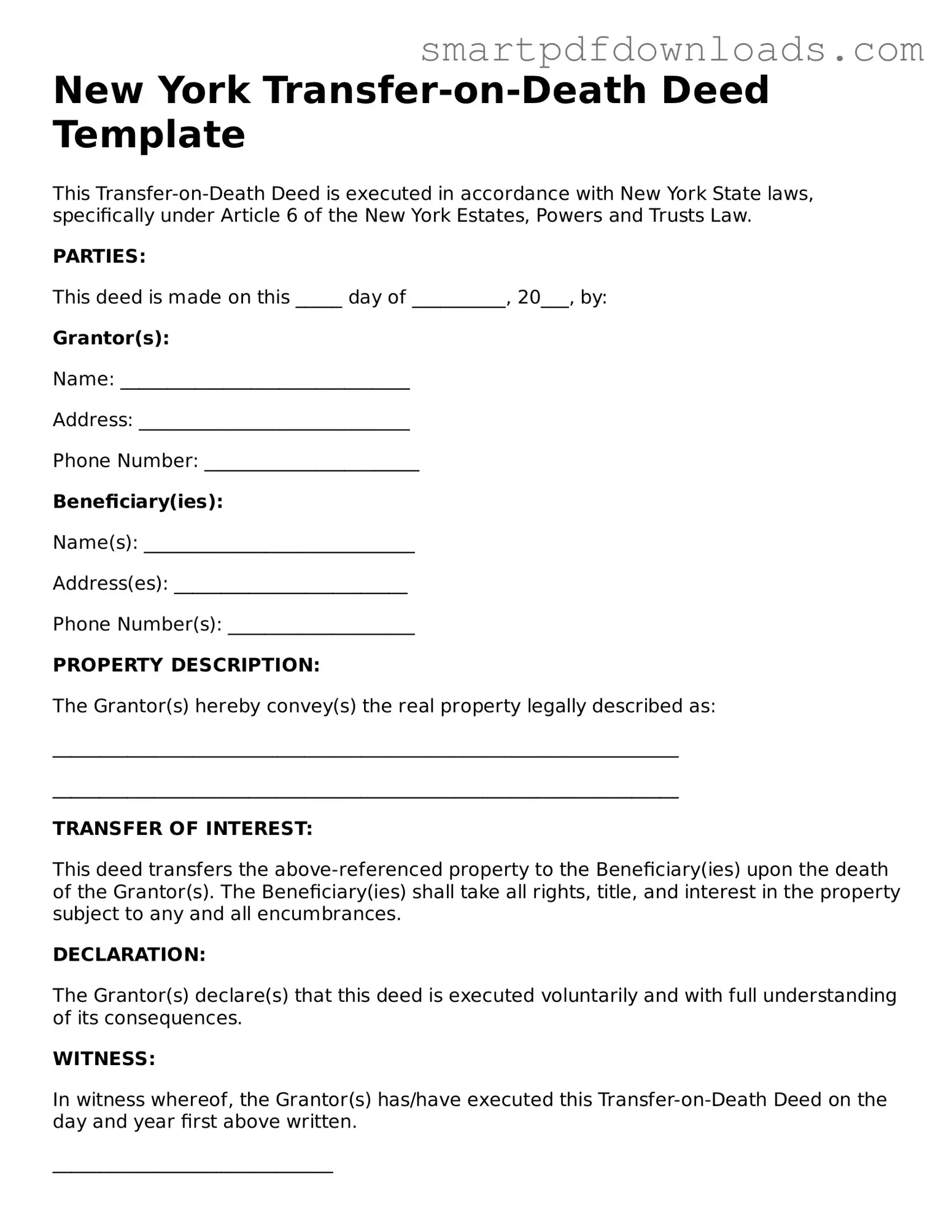New York Transfer-on-Death Deed Template
This Transfer-on-Death Deed is executed in accordance with New York State laws, specifically under Article 6 of the New York Estates, Powers and Trusts Law.
PARTIES:
This deed is made on this _____ day of __________, 20___, by:
Grantor(s):
Name: _______________________________
Address: _____________________________
Phone Number: _______________________
Beneficiary(ies):
Name(s): _____________________________
Address(es): _________________________
Phone Number(s): ____________________
PROPERTY DESCRIPTION:
The Grantor(s) hereby convey(s) the real property legally described as:
___________________________________________________________________
___________________________________________________________________
TRANSFER OF INTEREST:
This deed transfers the above-referenced property to the Beneficiary(ies) upon the death of the Grantor(s). The Beneficiary(ies) shall take all rights, title, and interest in the property subject to any and all encumbrances.
DECLARATION:
The Grantor(s) declare(s) that this deed is executed voluntarily and with full understanding of its consequences.
WITNESS:
In witness whereof, the Grantor(s) has/have executed this Transfer-on-Death Deed on the day and year first above written.
______________________________
Signature of Grantor(s)
______________________________
Signature of Witness
NOTARY ACKNOWLEDGMENT:
State of New York
County of ___________________________
On this _____ day of __________, 20___, before me, a Notary Public in and for said State, personally appeared _______________________________, known to me to be the person(s) described in and who executed the foregoing instrument.
______________________________
Notary Public
My commission expires: _________________
